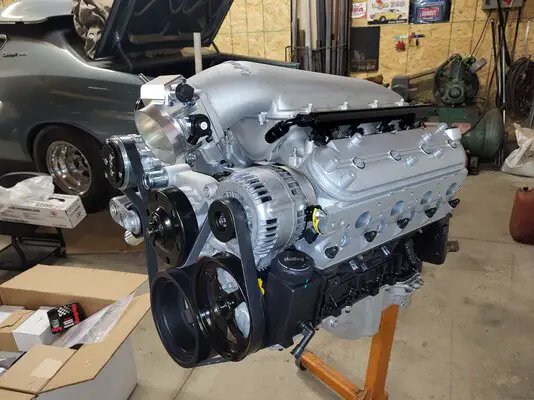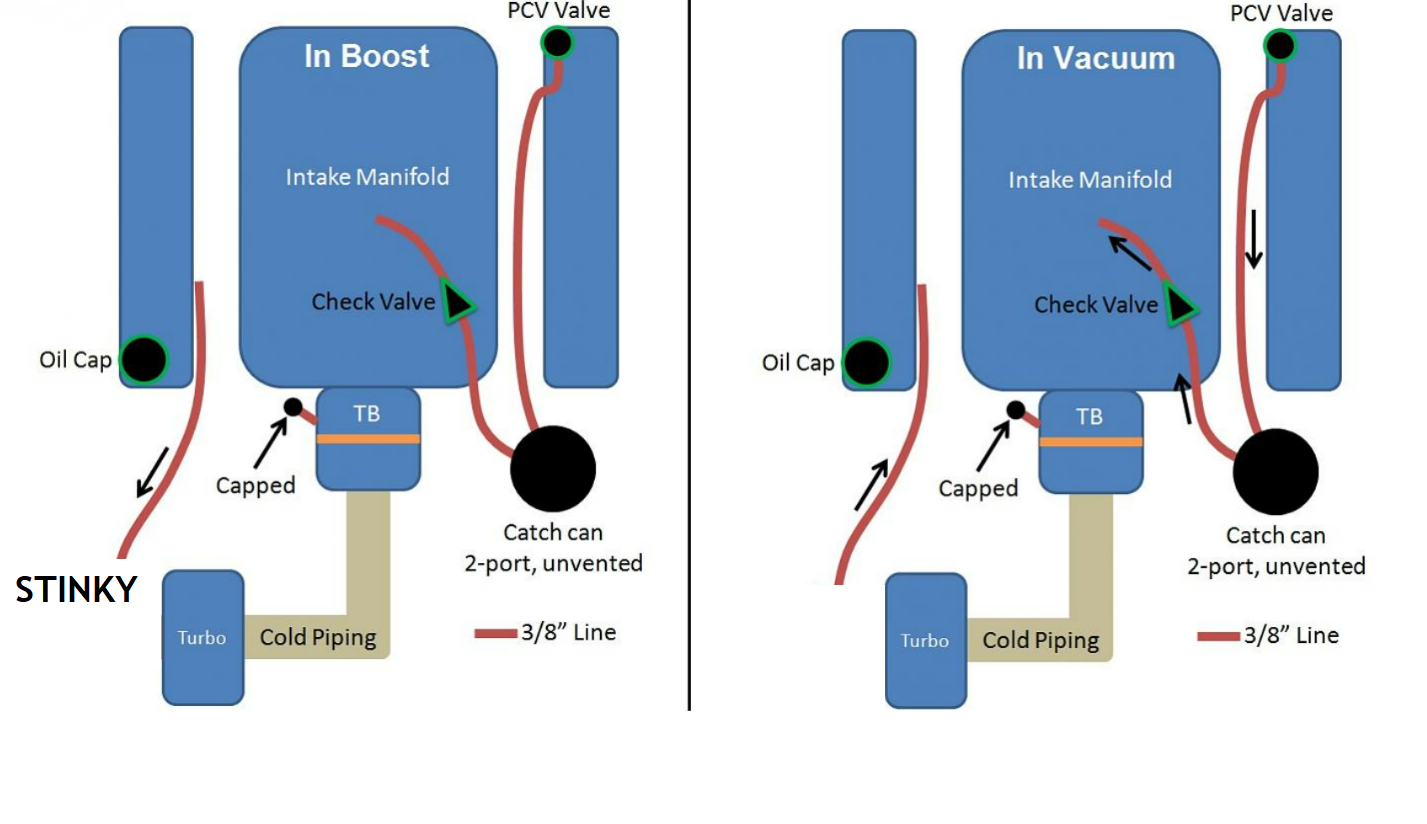For a 6L LS, single Precision 76 75. 12 psi. Holley Terminator Xmax.
One popular option is to vent to atmosphere. Great for engine seals as the crankcase will never see pressure.
How about for a street car that I want to have like a PCV system that evacuates the crankcase vapors?
If you have vacuum pulling dirty air through a catch can of one side with a check valve, then a inlet in the other side pulling from fresh, filtered and metered air in the air inlet tube before the throttle body. How to vent the crankcase during boost?
One popular option is to vent to atmosphere. Great for engine seals as the crankcase will never see pressure.
How about for a street car that I want to have like a PCV system that evacuates the crankcase vapors?
If you have vacuum pulling dirty air through a catch can of one side with a check valve, then a inlet in the other side pulling from fresh, filtered and metered air in the air inlet tube before the throttle body. How to vent the crankcase during boost?




